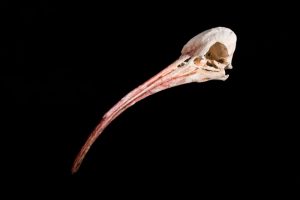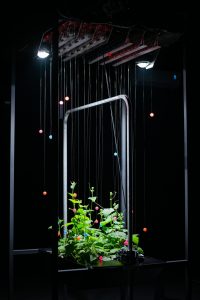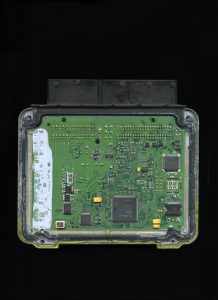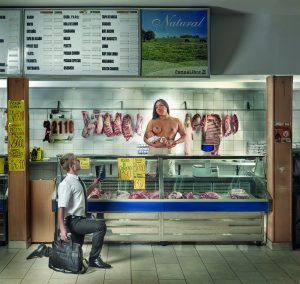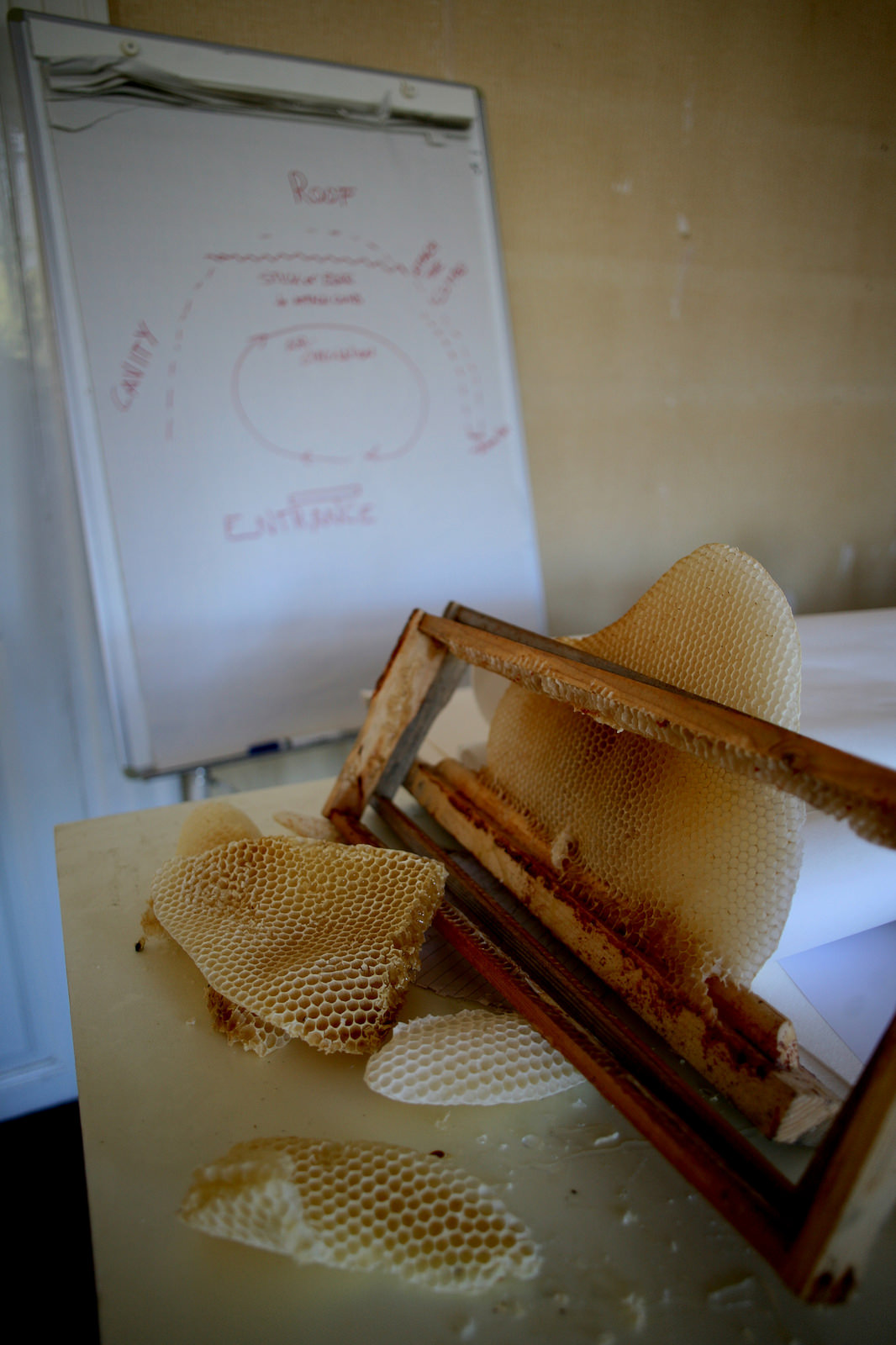
Honey combs and instructions. Melliferopolis Workshop Architectures for the Other Side at Pixelache Festival 20-22nd September. Photo Ulla Taipale
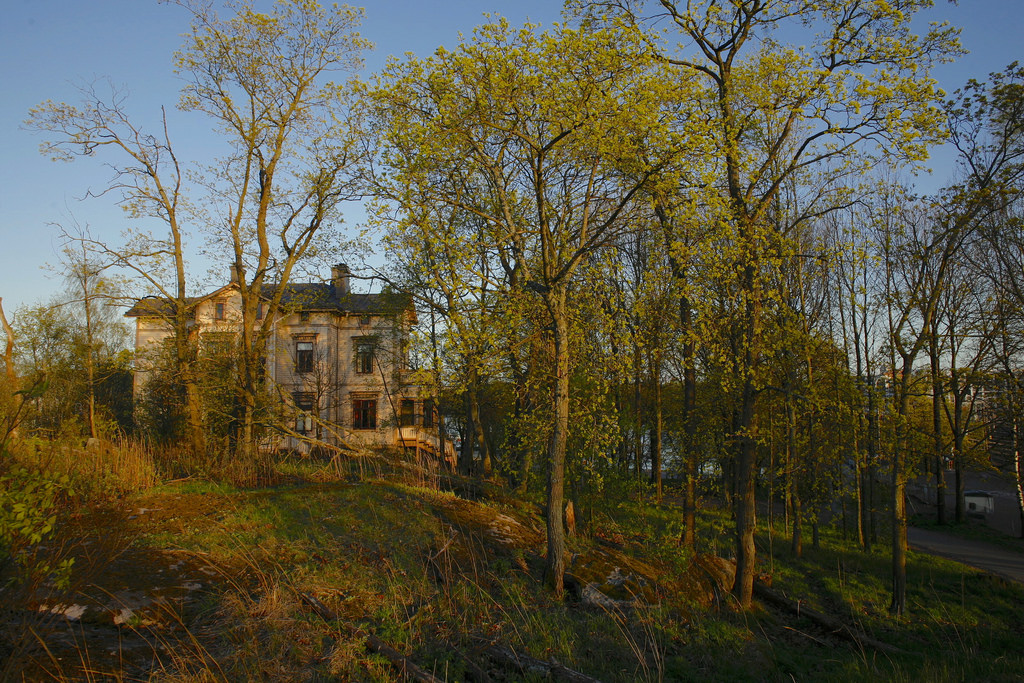
One of the six locations for The Other Side audio work. Photo Ulla Taipale
Honeybees have been mysteriously vanishing from their hives. One day, beekeepers find that worker bees have just disappeared, leaving behind a queen, food and a few nurse bees to care for the baby bees and the queen. Although things have been looking up lately, the phenomenon is so widespread, it has a name: Colony Collapse Disorder.
Scientists are still looking for an explanation to CCD but the suggested causes for the crisis include: climate change, pollution, pathogens carried by honey bees pest, loss of habitat, a family of pesticides called neonicotinoids, stress due to transportation to multiple locations for providing pollination services, malnutrition, immunodeficiencies, etc. Or a toxic combination of several factors.
A future without bees would make for a very sad humanity. Bees are not just producing honey, they are also pollinating flowers and all kinds of food staples, from apples to broccoli to almonds to coffee beans. Experts estimate that 50 to 80% of the world’s food production rely directly or indirectly on pollination by insects and other animals.
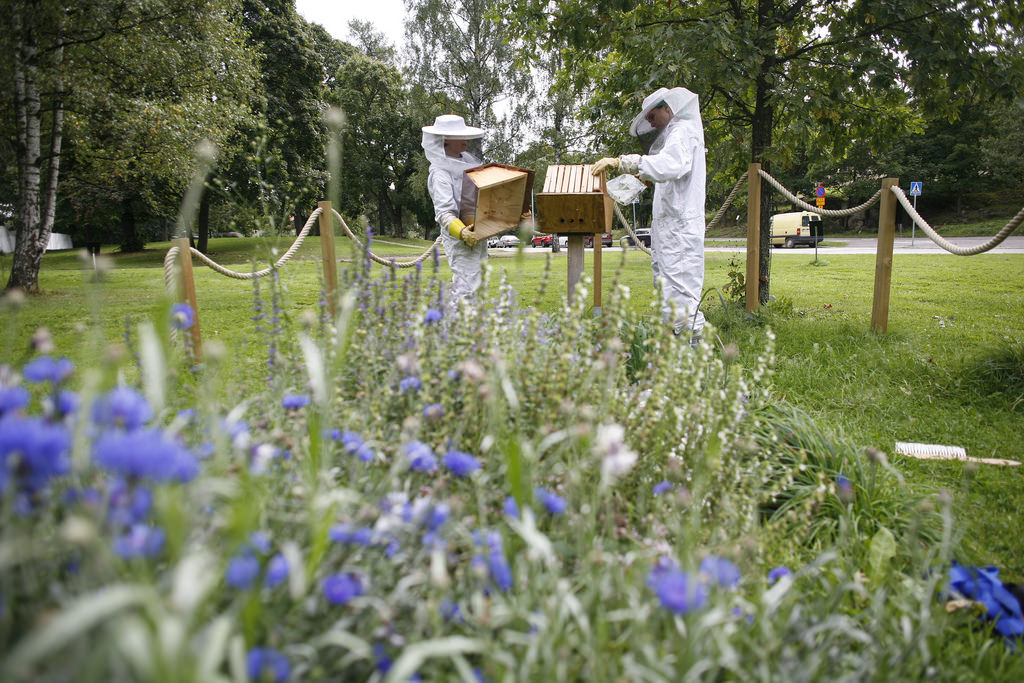
Beekeepers Christina and Hanna checking the situation in the Hexa-Hive. Photo Ulla Taipale
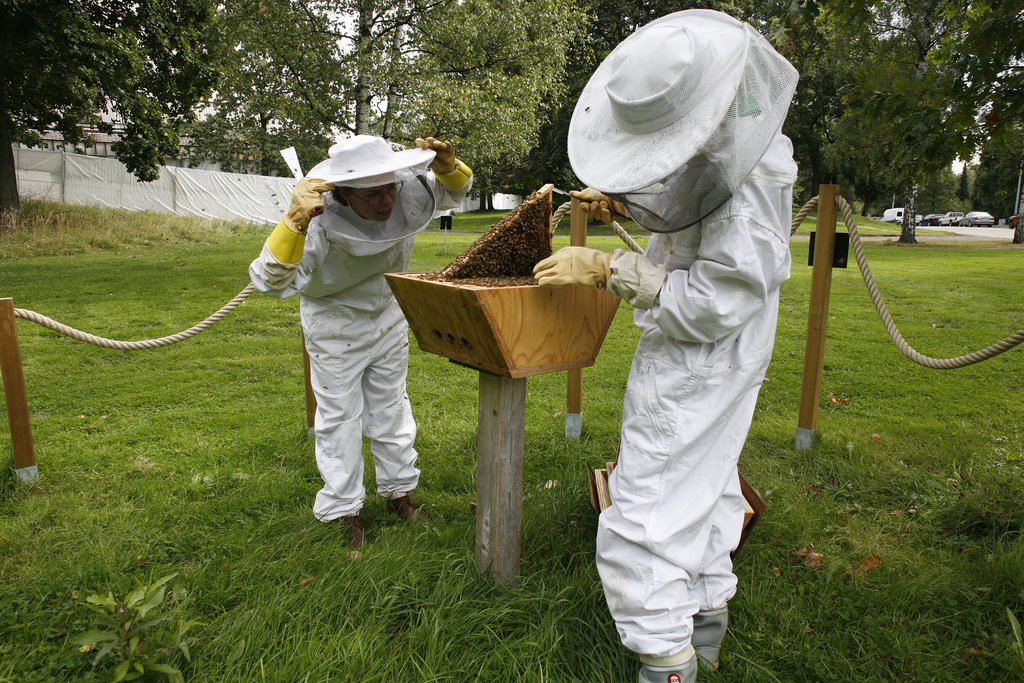
Beekeepers Christina and Hanna checking the situation in the Hexa-Hive. Photo Ulla Taipale
We need to take better care of bees. Either we leave that task to governments and hope they’ll be fast, efficient and impervious to the influence of lobbies and corporations. Or we try and make an impact at grassroot level. Which is exactly the kind of attitude that the Pixelache Festival in Helsinki has been fostering for years.
This year’s edition of the festival featured a series of Melliferopolis events open to everyone curious about the relationships between the tiny pollinators and humankind. Melliferopolis is a long term project launched a few years ago by artist Christina Stadlbauer and curator Ulla Taipale (in collaboration with honeybees) with the objective to learn, discuss, and engage with bees and urban beekeeping from both scientific and artistic view points.
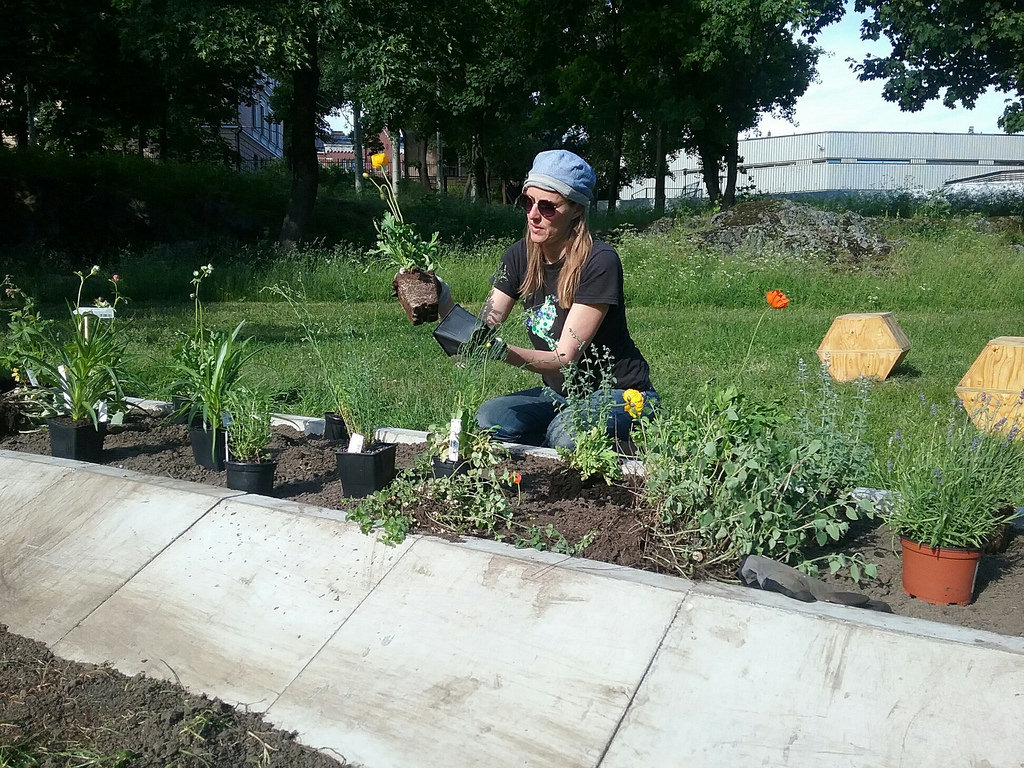
Ulla Taipale planting pollinator friendly flowers for the Airstrip for Bees
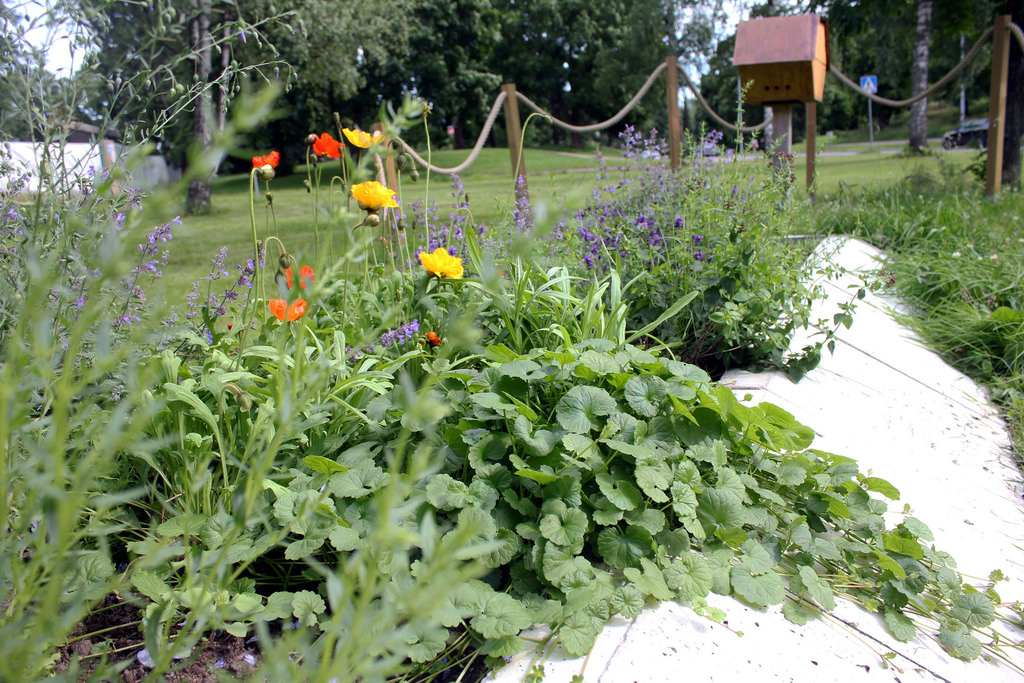
Airstrip for Bees with an experimental bee hive “Hexa-Hive” on the back. Photo: Hanna Vainio
In practice this means hands-on workshops, lectures, beehive building, bee-friendly flora planting, concerts, guided tours, mapping and other activities that turn the city of Helsinki into a more pollinator-friendly environment.
The idea of installing beehives in the middle of a city is not as unreasonable as it might seem. Research suggests that urban areas are actually good places for plant pollinators to thrive. While rural areas are often intensively farmed and pesticide-drenched, gardens, allotments, parks but also wasteland and industrial estates provide a mixed source of flowers all year long.
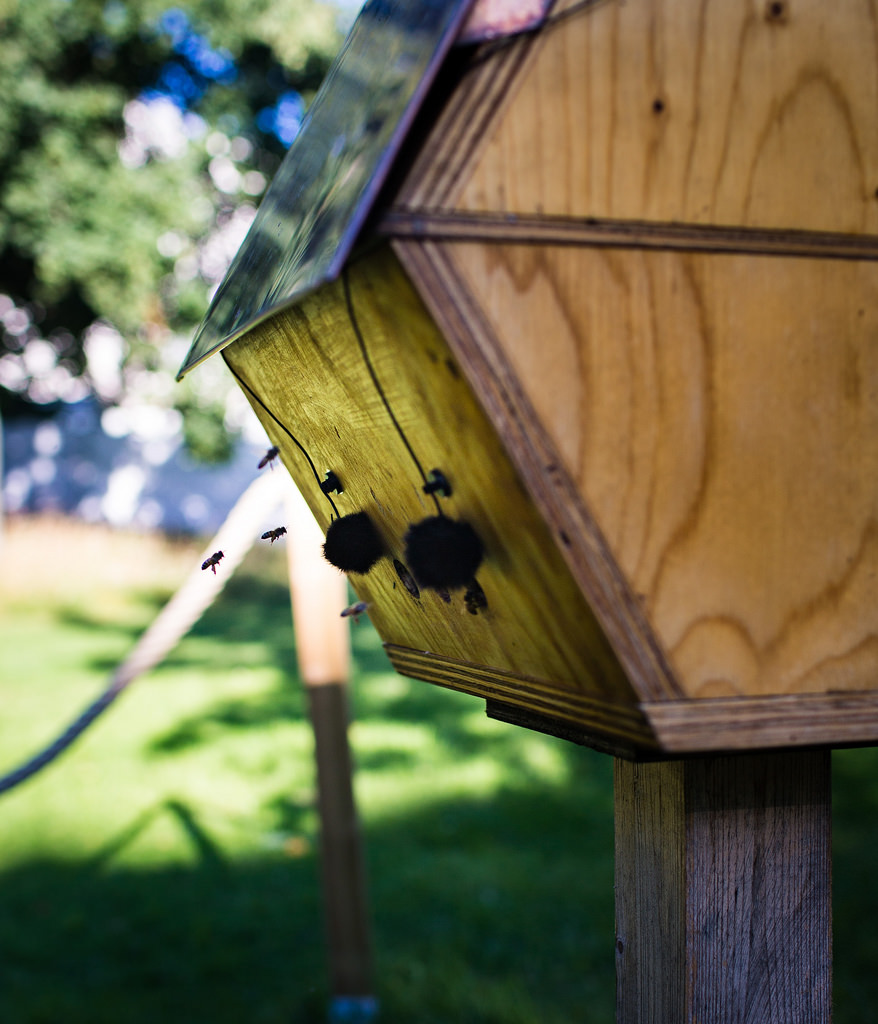
Day before the Hive Concert at Hexa-Hive Village, testing sound from the bee hive. Photo Till Bovermann
Melliferopolis installed its first experimental bee houses in 2012 in the Kaisaniemi Botanic Garden. Called Hexa-Hives, theses new shapes for bee hives are hexagonal instead of cubic. The design is inspired by the natural patterning in the bees’ own constructions of wax. The boxes can be stacked or aligned, and adapted to the necessities of the bee colony. They can be even be used as little seats for humans.
The design of the Hexa-Hives embodies the whole ethos behind Melliferopolis: it is a bee-centric, rather than a honey-centric, anthropocentric, endeavour.
None of that Flow Hive no pain all gain malarkey, thus!
The installation of more Hexa-Hives as well as other types of hives followed around the city.
This year the whole Melliferopolis programme at Pixelache was inspired by science fiction author Johanna Sinisalo’s book The Blood of Angels. The story is set in the near future, when the collapse of bee populations has gone out of hands and the global agricultural network goes into total disarray. In the story (as in many cultures around the world where bees are symbols of resurrection), the pollinating insects are messengers of the Gods and they can pass from one world to the other.
The Melliferopolis workshop at the festival was thus aptly called Architectures for the Other Side and it invited participants from all kinds of backgrounds to learn about beekeeping and hive ecology in order to build ‘experimental, empathic hives.’
The three beehives created during the workshops were exhibited as part of the Pixelache festival and come Spring, they will be inhabited with bee colonies.
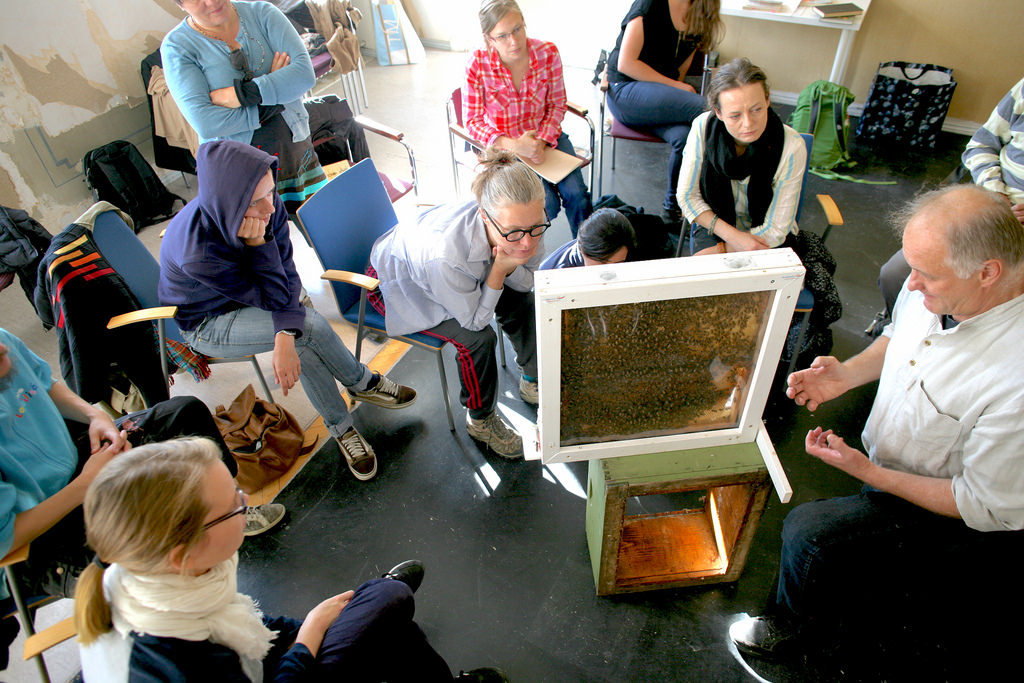
Melliferopolis Workshop Architectures for the Other Side with biologist and beekeeper Lauri Ruottinen at Pixelache Festival 20-22nd September 2016. Photo Ulla Taipale
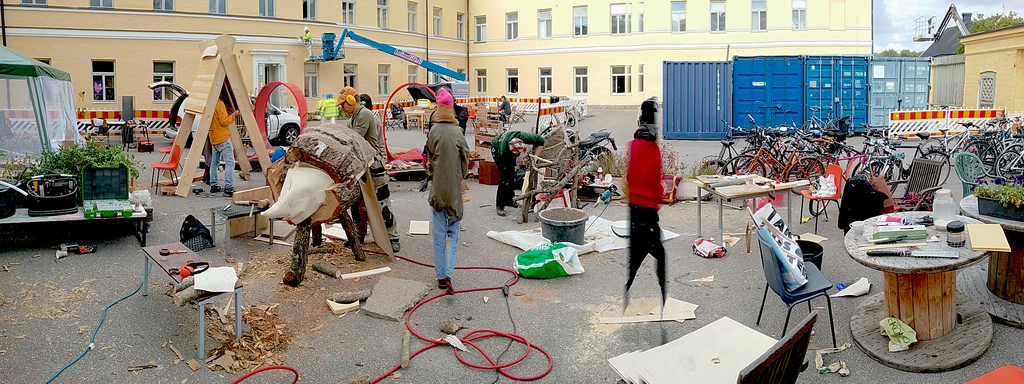
Melliferopolis. Panorama Architecures for Other Side workshop at Lapinlahden Sairaala / Pixelache Festival. Photo Ulla Taipale
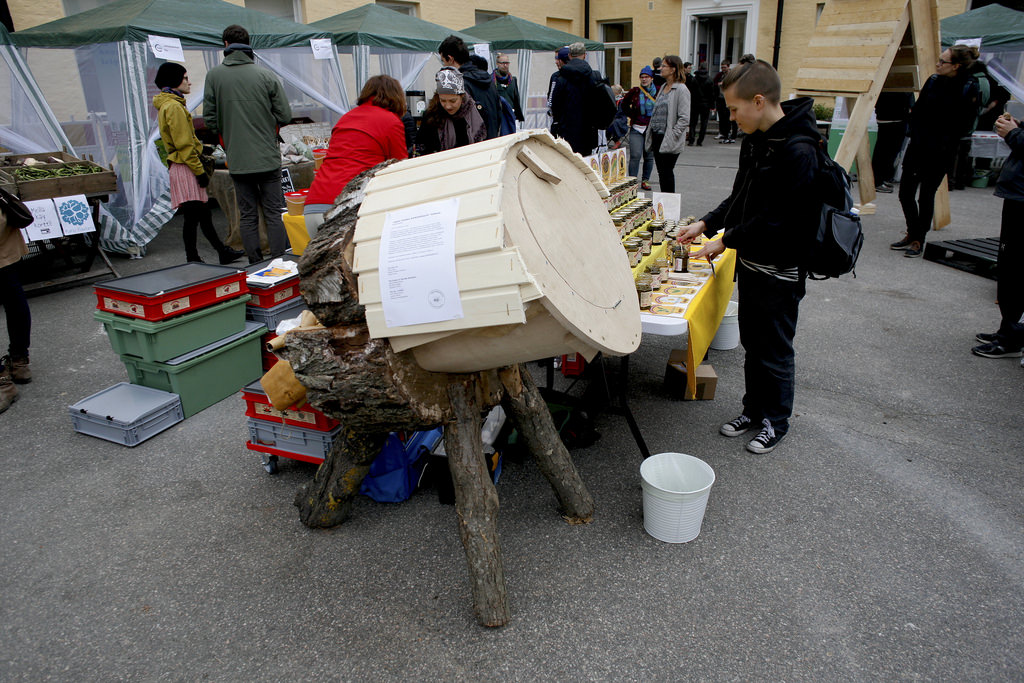
Melliferopolis. The Jar beehive in the middle of Foodycles market. Photo Ulla Taipale
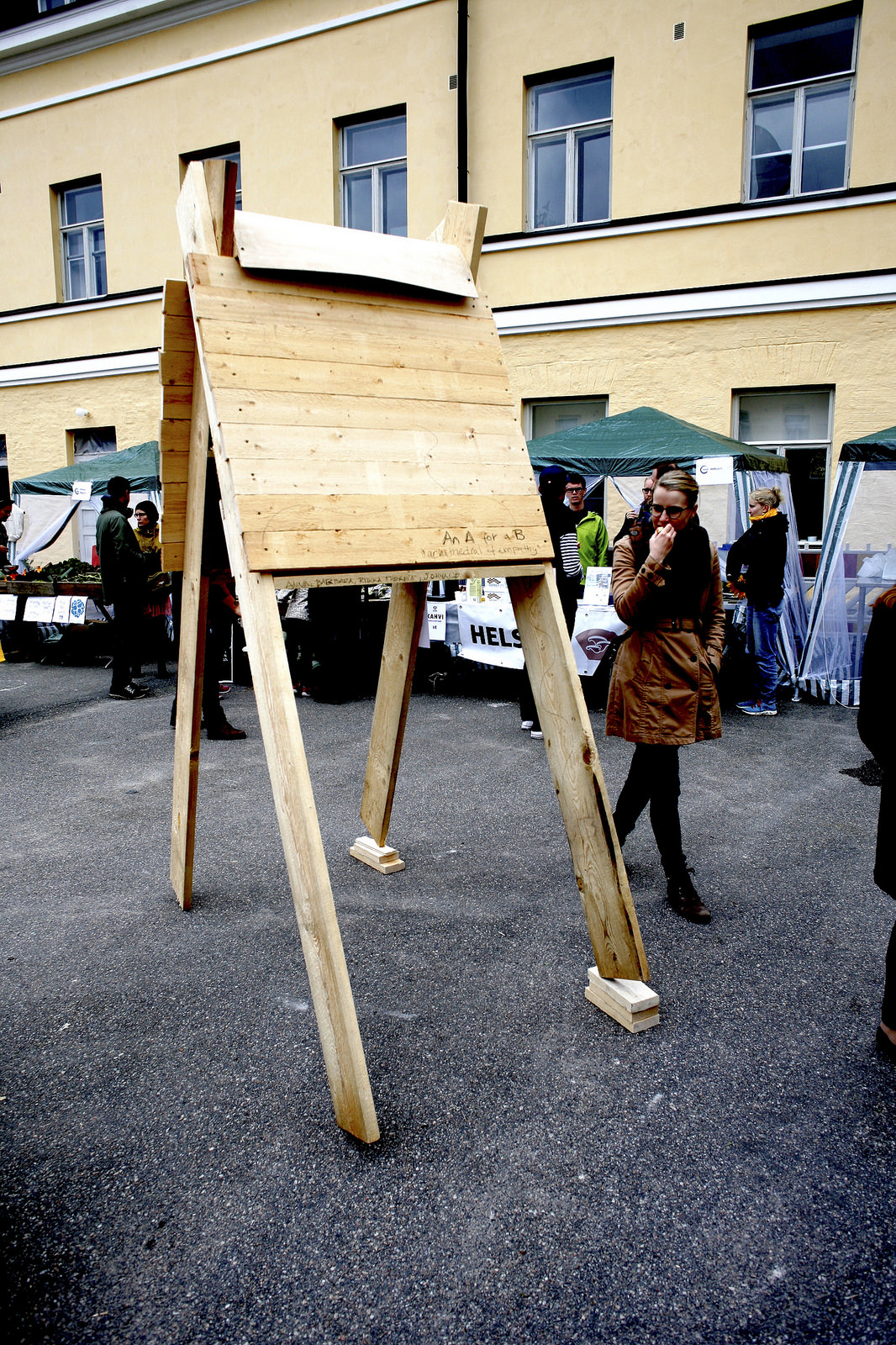
Melliferopolis. An A for a B beehive in the middle of Foodycles market
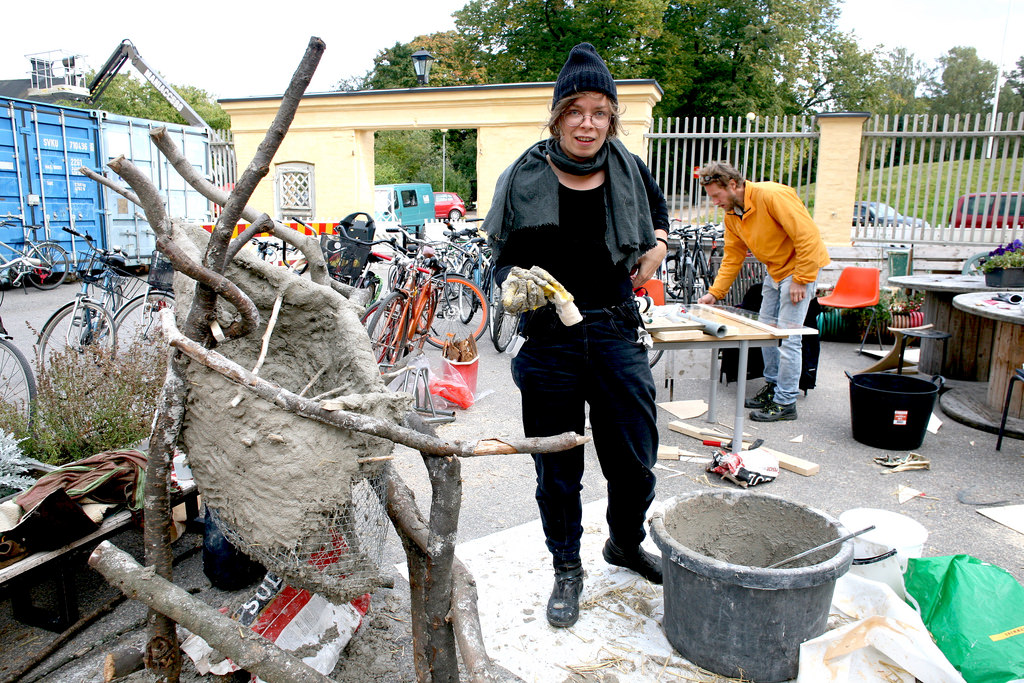
Melliferopolis. Hanna Vainio workshopping. Photo Ulla Taipale
Under its charming and bucolic guises, Melliferopolis is an artistic experiment that has the potential to have a real impact on the flourishing of honeybees and on the blooming of a more diverse flora in the city of Helsinki. It is also a project that helps the public understand better how much our food supply and the one of future generation depend on the survival of the tiny insects. As Johanna Sinisalo explained in her talk during the opening evening of Pixelache, no one seems to care about the bees, they are the new inconvenient truth, the discussion we don’t want to face because it would force us to change our ways of living.
More images from the Melliferopolis programme:
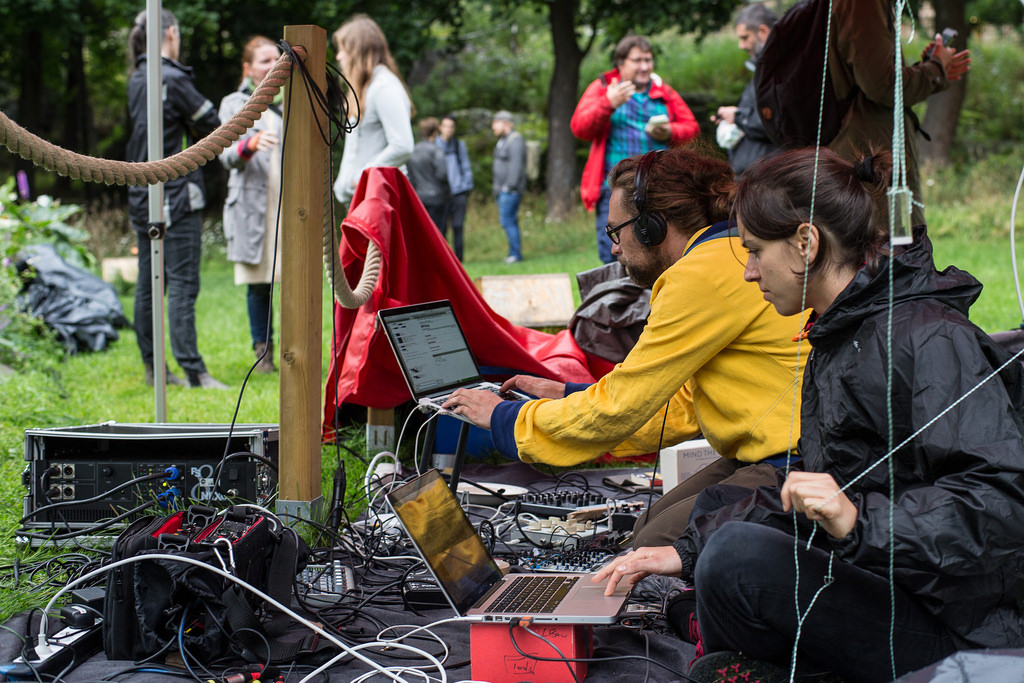
Hive Concert at Hexa-Hive Village 18.8.2016, Katharina Hauke and Till Bovermann playing with bees. Photo Till Bovermann
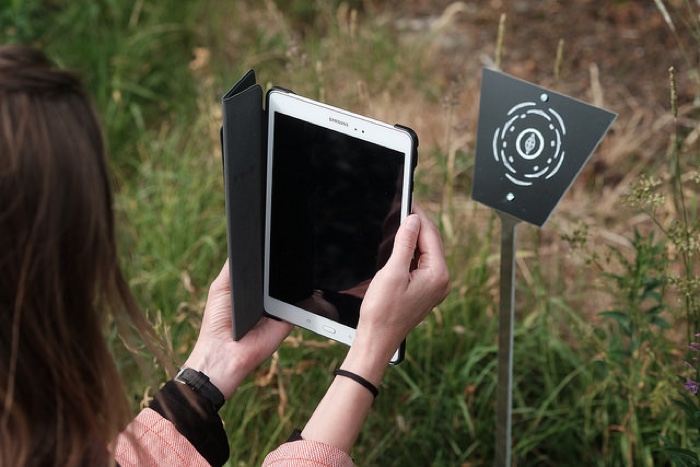
Melliferopolis. Arilyn, The Other Side (a site-specific audio work that features parts of Johanna Sinisalo’s novel Enkelten Verta/ The Blood of Angels, the free Arilyn app can be activated in an area of Helsinki with its own flora and fauna.) Photo Antti Ahonen
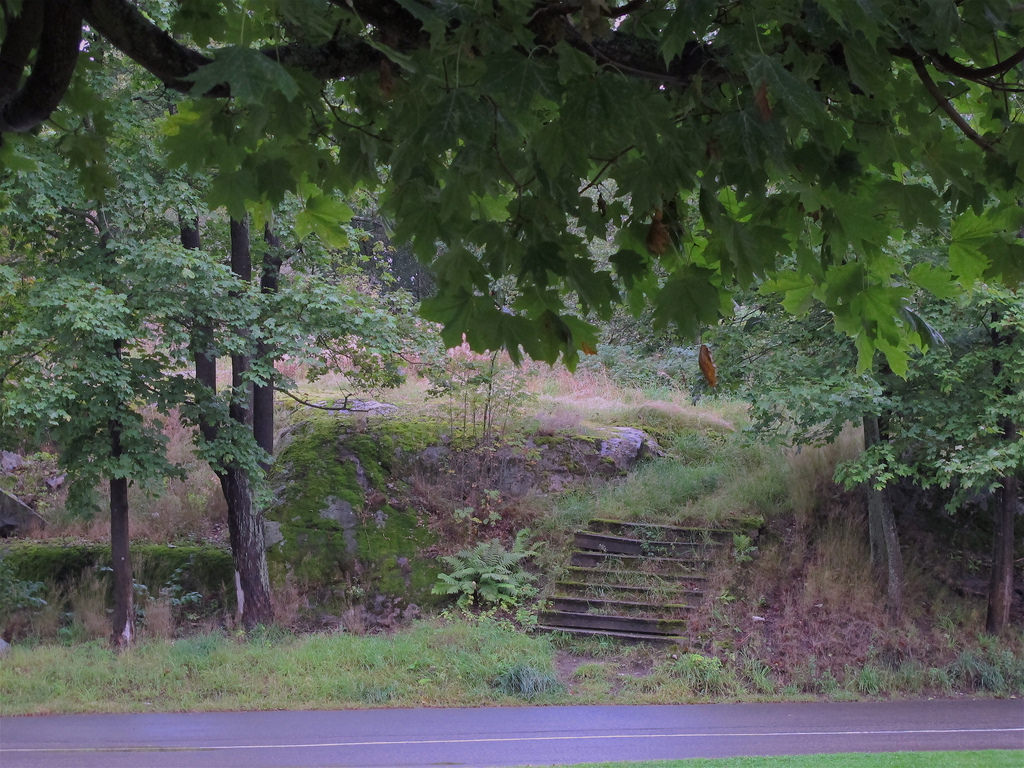
One of the locations for The Other Side audio work. Photo Ulla Taipale
Melliferopolis is a project that involves regular events but also a fair amount of daily care that requires regularly checking on the health of the colony, ensuring the bees will have enough sugar energy to stay alive till the end of winter, making sure the hives remain free of any parasites or pathogens, carefully observing the honey flow so you know what to leave behind and crossing fingers in the hope that the colonies will still be alive next Spring!
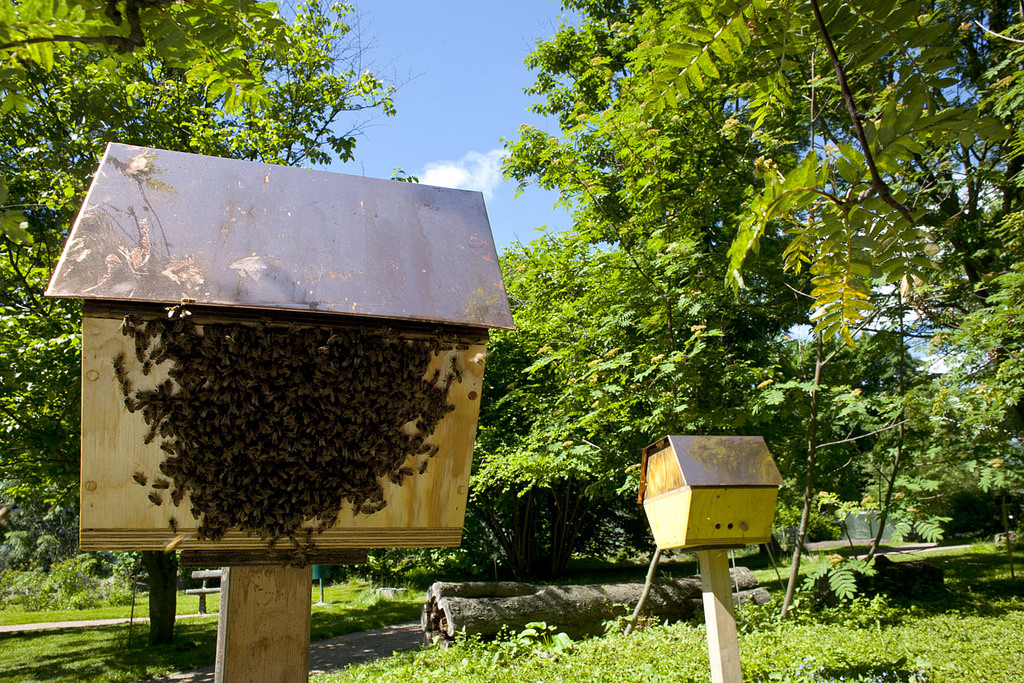
MFP Workshop III: Bees for Architecture and Architecture for Bees by Nigel Helyer, 9-11th June, 2014. Photo: Ulla Taipale
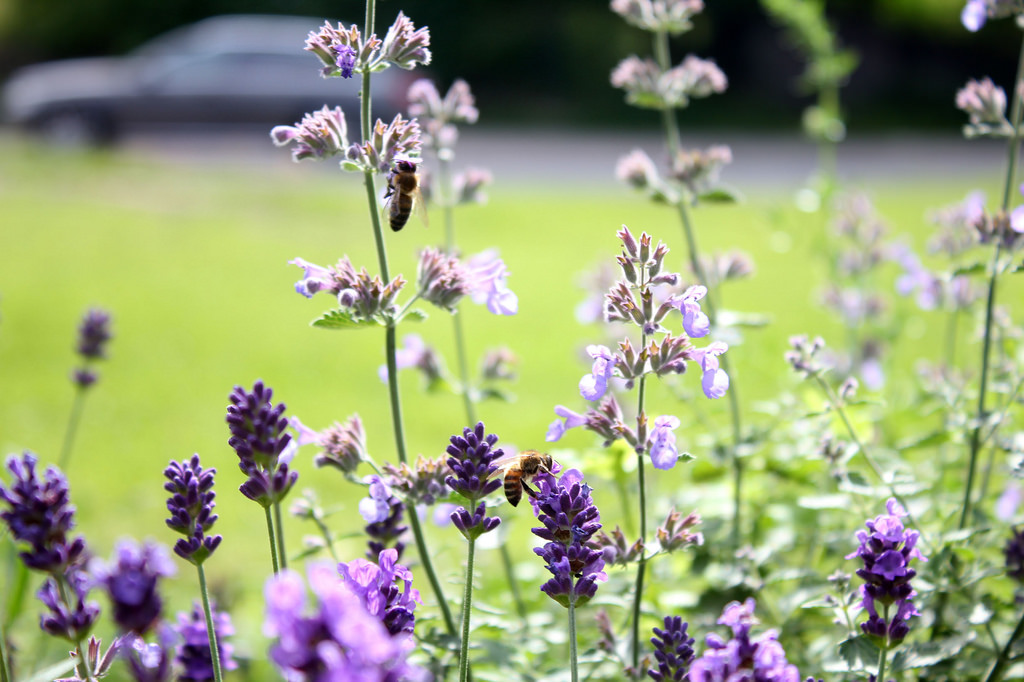
Pollinators have arrived. Photo: Hanna Vainio
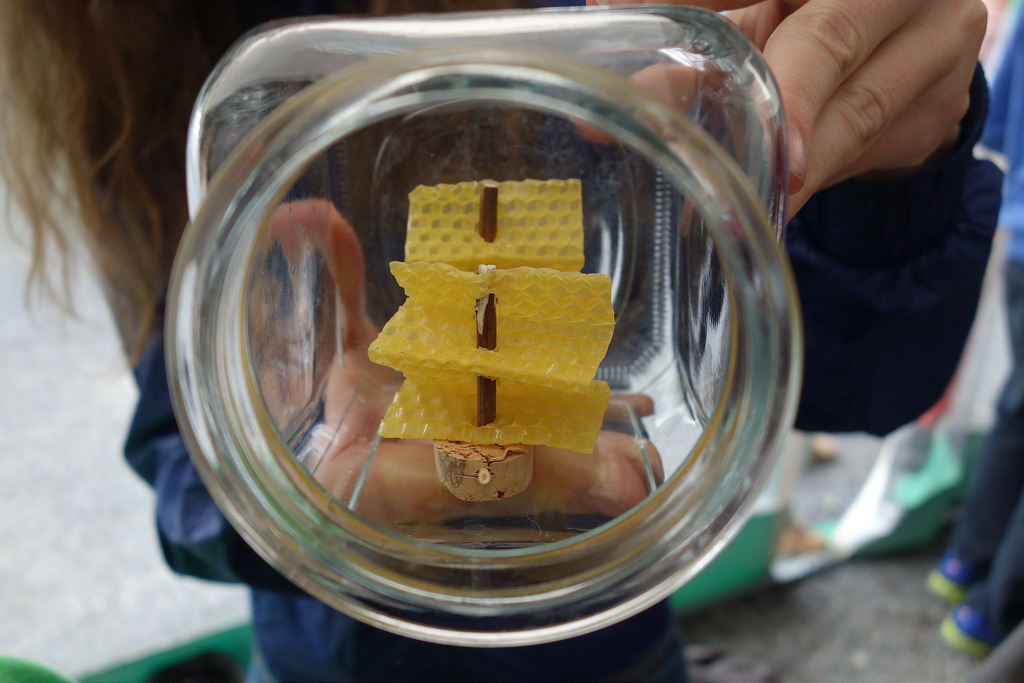
MFP Workshop III: Bees for Architecture and Architecture for Bees by Nigel Helyer, 9-11th, 2014. Photo: Nigel Helyer
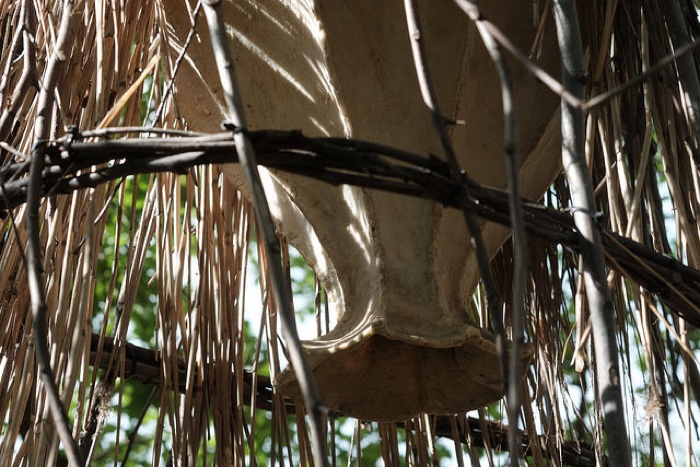
Bee Ark at Kaisaniemi botanic garden (detail.) Photo Antti Ahonen
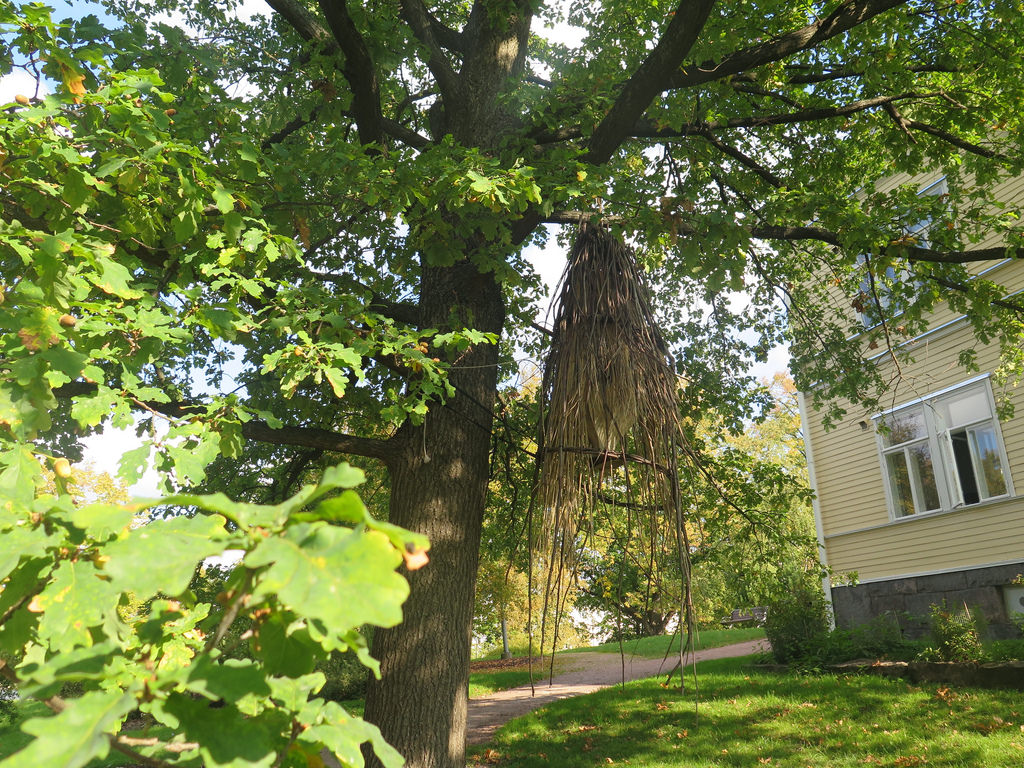
Bee Ark at Kaisaniemi botanic garden. The beehive was built during MFP Workshop III: Bees for Architecture and Architecture for Bees by Nigel Helyer, 9-11th June, 2014
More photos from Melliferopolis.
Previously: Pixelache 2016: The Science of Empathy.
Urban bee activism and Book review: Art & Ecology Now.

